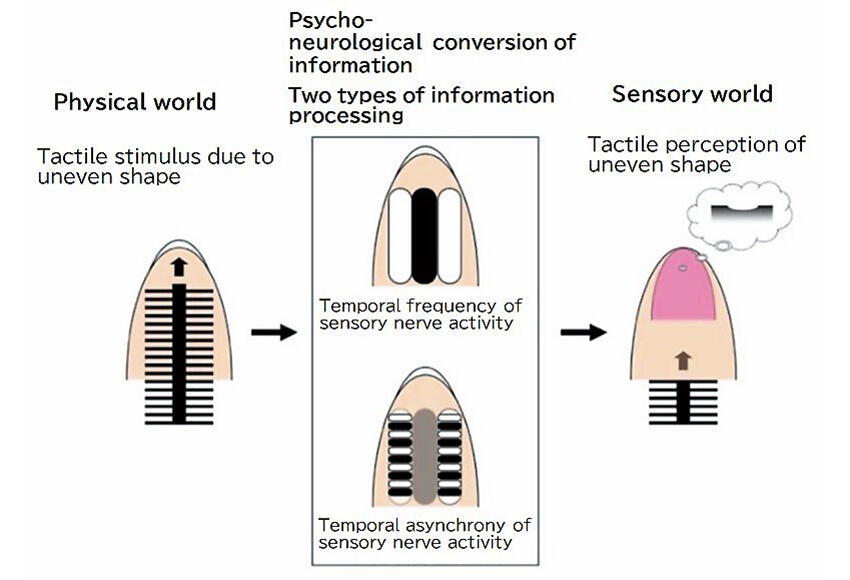A person can instantly recognize external information about an object, such as its shape and softness, by touching the object with a fingertip. However, when compared to the other four senses of the body, this tactile-perceptual mechanism has not been fully clarified.
A research group including Professor Masaharu Nagayama of the Institute of Electronic Science, Hokkaido University, and Associate Professor Masashi Nakatani of the Faculty of Environment and Information Studies, Keio University, has clarified that tactile illusion causes people to feel as if they are touching an indented part of a regular uneven surface even when they are touching a raised part. In addition to discovering for the first time a situation in which this tactile illusion does not occur, the researchers developed a mathematical model for skin sensation to elucidate the mechanisms by which tactile information is processed. Studies examining human reactions have revealed that reducing horizontal skin deformation, which allows the skin to stretch and contract when the fingertips touch an object, clearly reduces the degree of the illusion.
In addition to this, 72 tactile sensory sensors mimicking a person's finger were designed on a computer, and a mathematical model was used to identify and replicate the responses of sensory nerve clusters within the peripheral skin of the fingertip. The results showed that the shape of the objects could be recognized by touching them with only a fingertip because many sensory nerves in the fingertip responded with a small latency period rather than immediately. If the results of this research were used to simulate sensory nerve responses on a computer, we would be able to elucidate the mechanism by which peripheral nerves convey complex tactile perception. The development of technology that conveys tactile sensations electronically appears promising for the future.





